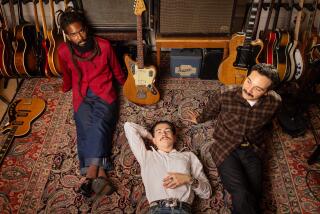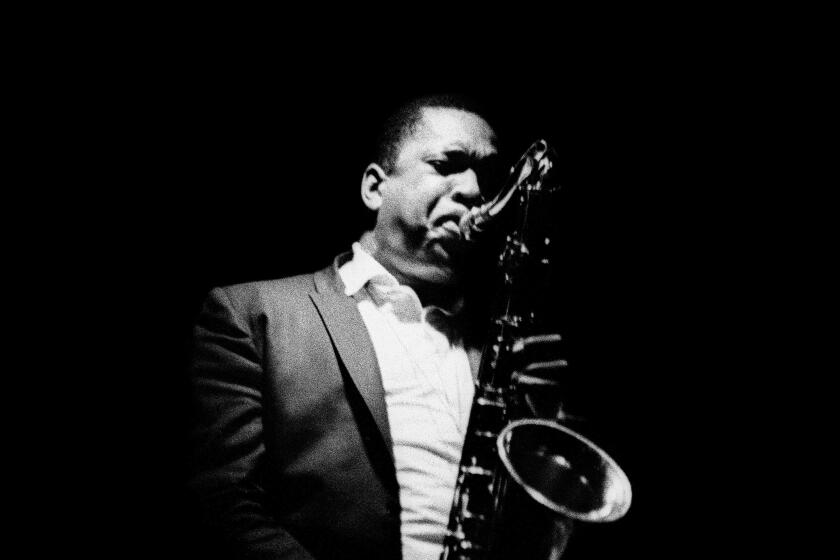S<i> OUL </i> SEARCHING : The Rev. Al Green Is Now Guided by Gospel, but Sometimes the Old Hits Tempt
- Share via
The eternal skirmish between flesh and spirit has always been an animating force in soul music.
More than a decade after renouncing the fleshpots of pop for the spiritual seeking of gospel music, Al Green is still apt to put a little tension into his shows by toying with the temptation of singing some of the romantic hits that made him the leading soul performer of the early to middle 1970s.
When the Rev. Green came to the Coach House a year ago, he sang some brief excerpts from his passionate oldies, enough to stir hopes that he might let loose with a torrent of gold. But Green pulled back from temptation, laughingly admonishing his listeners that they couldn’t get him to give in.
In the end, it didn’t matter, because Green’s gospel songs were soulful and vibrant enough to make an atheist suspend disbelief.
Green, 44, grew up in Arkansas and Michigan. He got his professional start as a boy, singing in his family’s touring gospel ensemble. But, in the familiar soul singer’s pattern, he turned to pop music when he became old enough to choose his own path.
Green’s career took off after he met Willie Mitchell, a Memphis-based record producer. Mitchell wove smooth, taut fabrics around Green’s subtly adventurous vocals, creating a sound both smoldering and sophisticated. A string of eight Top 10 hits followed between 1971 and ‘74, most of them written or co-written by Green.
One sure sign of a song’s endurance is its ability to work in a variety of musical contexts. Green’s top songs certainly meet that test: Talking Heads’ first mass success came with “Take Me to the River,” Tina Turner launched her big mid-’80s comeback with “Let’s Stay Together,” and UB40 recently did a successful reggae remake of “Here I Am (Come and Take Me).”
It was during a performing stint at Disneyland, of all places, that Green found religion in 1973. “I can’t explain it, but I woke up rejoicing and was a changed man,” he once said.
Faith didn’t shield Green from harm, though. In a bizarre 1974 episode, his lover scalded him with a pot of boiling water after he refused to marry her. Then she shot and killed herself.
After that, Green moved further toward the spiritual side.
He became a minister and established his own church in Memphis. His music grew more spiritually conscious through the late ‘70s until, by 1980, he had crossed the line from soul to gospel. But every so often, Green still acknowledges that tempting line between his old and new musical lives. Whatever side he falls on, he remains one of the classic soul voices.
Who
Al Green.
When
Saturday, Aug. 4, at 8 and 10:30 p.m.
Where
The Coach House, 33157 Camino Capistrano, San Juan Capistrano.
Whereabouts
Interstate 5 to the San Juan Creek Road exit. Left onto Camino Capistrano. The Coach House is in the Esplanade Center.
Wherewithall
$29.50.
Where to call
(714) 496-8930.
More to Read
The biggest entertainment stories
Get our big stories about Hollywood, film, television, music, arts, culture and more right in your inbox as soon as they publish.
You may occasionally receive promotional content from the Los Angeles Times.











